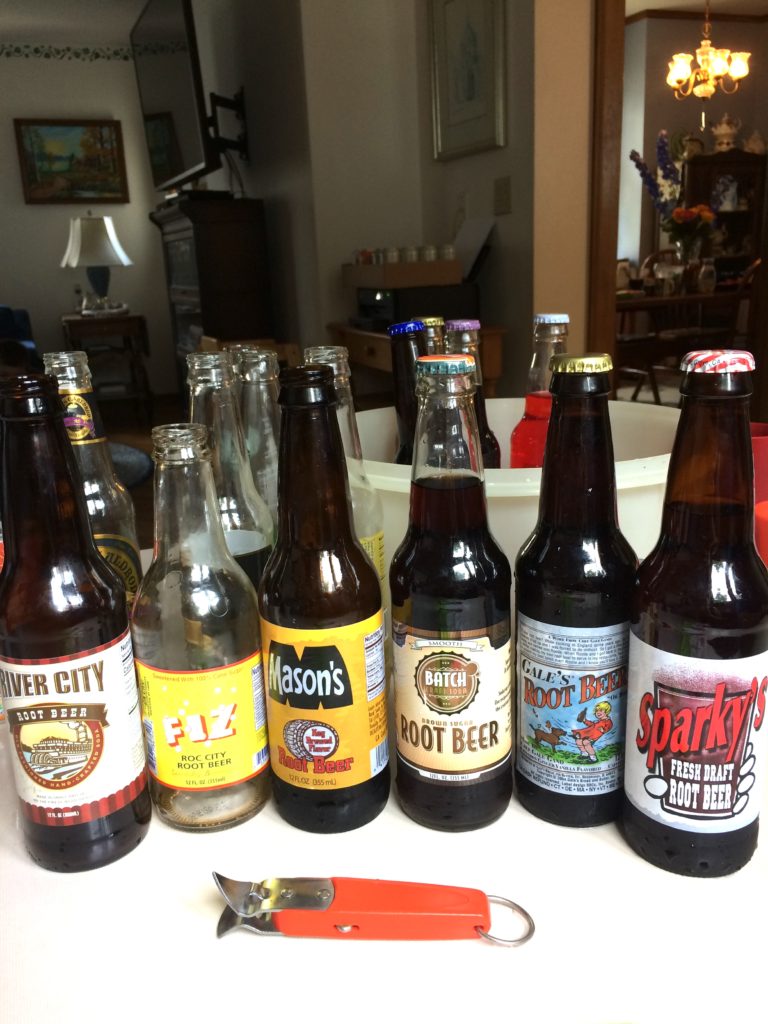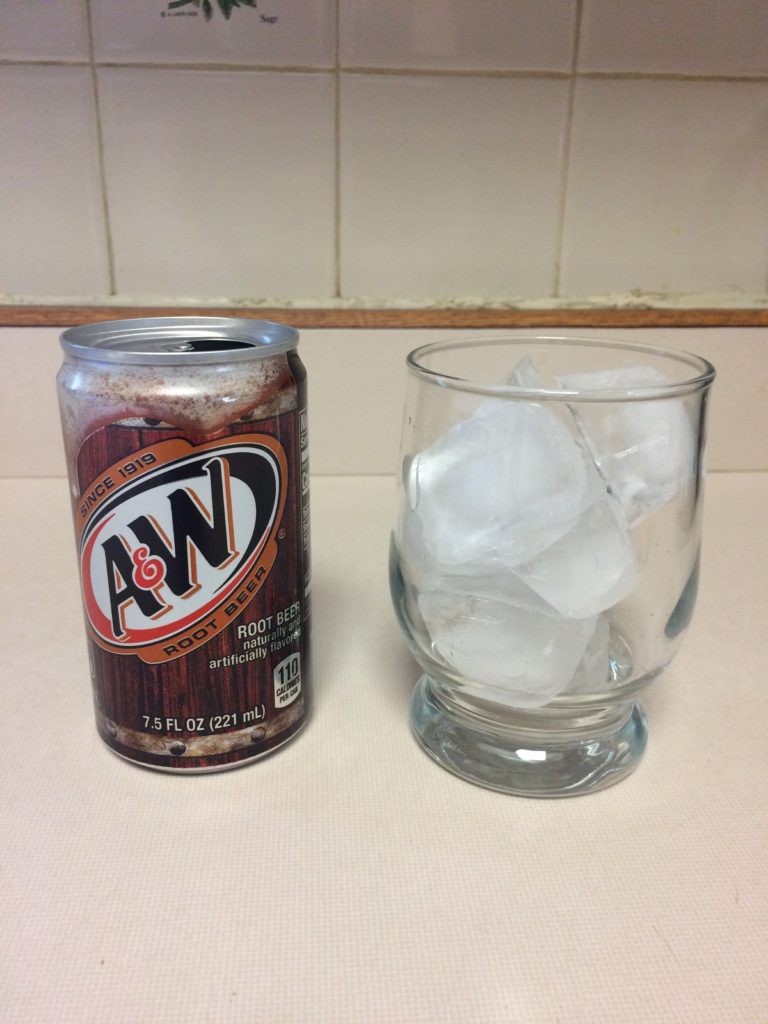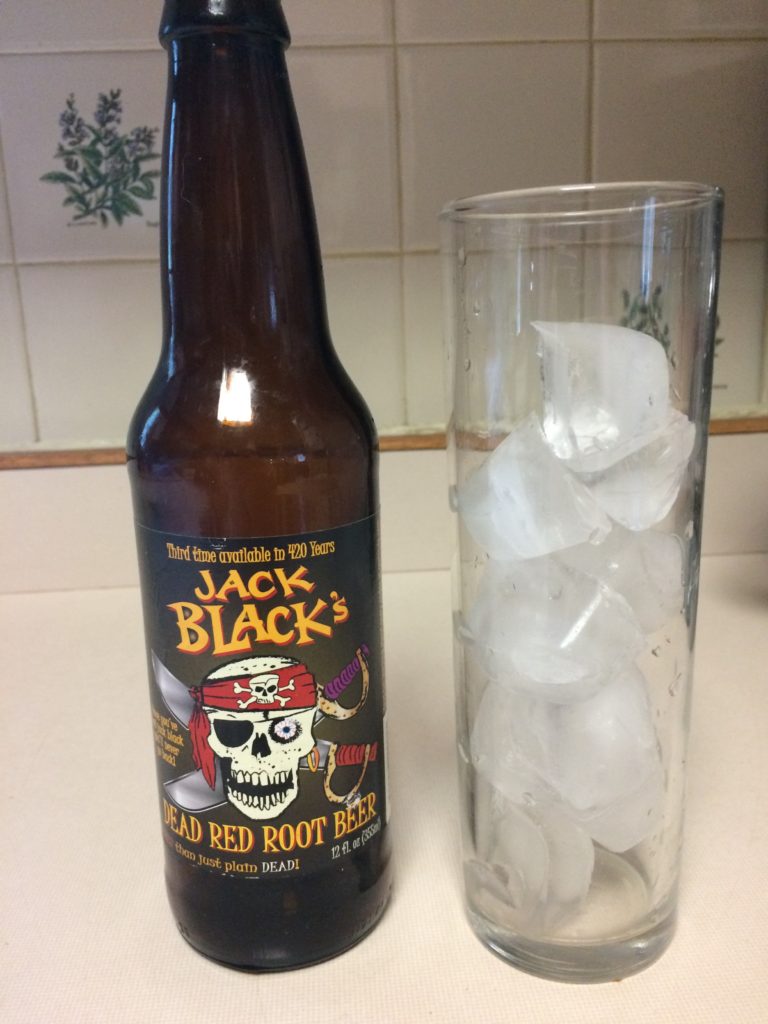
Sappy, But True
Root, root, root for Root Beer,
Give a cheer for near-beer.
The bubbles, the fizz –
That’s all there is.
Sweet, sweet tang—sugar with a bite.
It’s a taste of ‘all-right’!
You might tip a mug of beer
for friends far and near.
Or add ice cream to a glass
of this special sassafras,
because this ice creamed treat
is a dessert that can’t be beat.
~Annette Gagliardi
This past Sunday, we celebrated Father’s Day with a classically quintessential summer treat made with bubbly Root Beer and creamy vanilla ice cream—what a nostalgic throwback to simpler times and soda-shop days! It was my husband’s wish to have hot dogs and Root Beer floats for his celebration and the kids were delighted with his request.
Our eldest daughter took her dad out to a little shop (the Northern Soda Company)[1] for a variety of new-aged micro brews. They also stopped at Blue Sun in Lake Park, MN to add to the Root Beer run. You can’t have Root Beer floats without quality Root Beer.
There’s no better way to quench your thirst than by enjoying a nice glass of Root Beer, loved for its light and crisp taste. The note on the bottle of River City Root Beer says it all:
[1] Northern Soda Company, at (651) 484-7632. 3747 Dunlap St N, Arden Hills, MN 55112
“Root beer brings back memories of a time gone by-when the sky was bluer and the clouds whiter and the breeze off the river got you cooler. Enjoy doggone good soda pop the way it used to be.”~ Janet & Bob Lake, River City Root Beer
The sweet, syrupy drink we now know has myriad variations. So, taste testing root beer – looking for the perfect blend of sweet, spice, flavor, and foam is a game we all enjoyed. We all had a favorite and not often the same one. “Too sweet!”, “Too tangy”, “Not enough foam.”, “Oh! Caramel!” were just a few comments from us taste testers. It was also fun to see how far one bottle of beer could go as we each sipped a bit and offered an opinion.

I remember stopping at the A&W drive-in when I was a kid. Not very often, but if we were lucky, all eight of us kids in the station wagon with Mom and Dad would turn in to the A&W drive-in and we kids would burst with anticipation. The A&W had those cute little mugs that they put in the freezer. The glass was so cold and the foam on top would tickle my nose. The soda pop was just the pick-me-up we all needed. I would sip it. Let it slip slowly over the rim of the glass into my mouth. The soft foam first, then the sweet syrup. YUM! I don’t remember ever spilling that open mug of sugar, but I suppose that happened on occasion.
Later, when I worked at the Flamingo-the steak house Grandma and Grandpa owned, we could once in a great while talk Grandpa into letting us have a bottle of Root Beer. Then he would cut open a bag of salted peanuts and I would pour those peanuts into my bottle of Root Beer. The foam would immediately rise from the bottle and I’d have to capture it before it overflowed. The sweet-salty taste was fabulous. I would try to drink the soda with the peanuts so the peanuts would last, but they always floated on the top, so I usually ended up with more pop than peanuts. Still, it was a fabulous, refreshing, and satisfying delicacy.

A little History:
Root beer is typically sweet and carbonated with a thick, foamy head when poured.
It was invented in North American and traditionally made using the root bark of the sassafras tree (Sassafras albidum) or the vine of sarsaparilla (Smilax ornata) as the primary flavor.
Root Beer’s origin can be traced to pre-colonial indigenous tribes who commonly created beverages and medicinal remedies from sassafras roots. Root beer as we know it today is descended from “small beers,” a collection of beverages (some alcoholic, some not) concocted by Native Americans and colonists using what they had at hand.
Root Beer is identified by its classic foam on the surface of the drink as it is poured into a glass, very similar to beers. The sassafras root bark, a main ingredient, naturally foams and gives it the distinctive look. Different brands of root beer have slightly different foams, giving each their own identity.
According to his biography, Philadelphia pharmacist Charles Elmer Hires discovered a recipe for a delicious tisane—a form of herbal tea—while on his honeymoon in New Jersey in 1875. Not long after, he began selling a dry version of the tea blend but it had to be mixed with water, sugar, and yeast and left to ferment for the carbonation process to take place.[1] On the suggestion of his friend Russell Conwell (founder of Temple University), Hires created a liquid formulation for a carbonated beverage that would be more appealing to the populace. The result was a combination of more than 25 herbs, berries, and roots that Hires used to flavor carbonated soda water. Hires’ Root Beer was a hit. In 1893, the Hires family was the first to sell and distribute bottled Root Beer.[2] Hires debuted a commercial version of root beer at the Philadelphia Centennial Exposition in 1876, and began selling his extract. [3]
[1] Bellis, Mary. “The History of Root Beer.” ThoughtCo, Feb. 11, 2020, thoughtco.com/history-of-root-beer-1992386.
[2] Ibid.
[3] Ibid.
Commercial root beer is now produced in every U.S. state and in Canada. Although this beverage’s popularity is greatest in North America, brands are produced in many other countries. The flavor of these other beverages may vary from typical North American versions
A&W, Dr. Pepper, Barq’s and others have done a great job popularizing root beer in the modern era, but many of the best are still made at craft breweries.
If you’ve never toured a brewery, you are missing an experience. We’ve been to wine brewers and early in our married life, we visited the Hams Beer Rathskeller in St. Paul-no longer there. We have gone to wine and beer taste testing events in California with our daughter and have always enjoyed learning how and why the ingredients mixed, simmered, brewed and fermented become a taste sensation in a glass.
One such company, Sprecher Brewing Company has quietly cornered the market with their awesome gluten-free beer (Shakparo), a great German-style Schwarzbier (Black Bavarian) and now brew an excellent alcoholic root beer, aged in…bourbon barrels! It’s a respectable 5% ABV, with just enough bourbon flavor, sweetness and spice to make this a standout.
In recent years, breweries have transformed from places that only brew beverages (beers and sodas, hard ciders and root beers) to tourist destinations. Brewers across the nation take pride in creating something special and unique to their brewery by hosting tasting rooms and tours. Some even have on-site pubs and restaurants, or offer guests a chance to make their own beer, wine of hard cider. They work hard to increase their fan base and to offer an experience to their customer beyond just selling the product.
Root beer is not actually beer, but may contain some alcohol. It belongs to a secondary classification of beer, brewed with plant roots instead of traditional cereal grains like wheat and barley. Many of the best root beers are made at craft breweries, but there are a few brands that are popular, tried and true, like A&W, Dr. Pepper, Barq’s and Mug.
The primary ingredients in modern root beer are filtered water, sugar, along with sassafras root, sassafras bark, and wintergreen. Add yeast and leave it to ferment for 12 hours. flavoring. In addition, root beer is commonly flavored with vanilla, caramel, black cherry bark, licorice root, sarsaparilla root, nutmeg, acacia, anise, molasses, cinnamon, sweet birch, and honey.
Making root beer involves cooking a syrup from molasses and water, letting the syrup cool and combining it with the root ingredients (including sassafras root, sassafras bark, and wintergreen). Add yeast and leave it to ferment for 12 hours. Then, strain and rebottle for secondary fermentation. Finally, adding ice to a glass and pouring.
The Name
Let’s consider the origin of the word beer: It could be based on the Jewish word for grain, which is bre. The word may have also come from the Saxon word for barley, which was bere. Or, it may have come from the Latin word for drink: bibere. It all boils down to the same modern word for a fermented and brewed beverage—beer.
Root Beer wasn’t always called Root Beer. It might have been called Sarsaparilla, Birch Beer, or even Sassafras, depending on the predominant flavor. Root Beer belongs to a secondary classification of beer, not one brewed with traditional cereal grains like wheat and barley, but with plant roots. Yet, Root Beer was originally made much like a grain-based beer. And some recipes still call for hops. Root beer is a brew, just like a beer, but whether you think it can correctly be called beer may depend on how you view the origins of the word.
The “root” in the name of Hires’ concoction came from its main ingredient, the sassafras root. It’s likely that he changed the name (sometime before the Philadelphia Centennial Exposition in 1876) to make the beverage more appealing to the working class. [1] Today’s Root Beer is simply a flavored soda.
A beer is something that is brewed and then fermented and doesn’t have to be alcoholic. One can make different kinds of beer by controlling the amount of fermentation. Any brewed beverage that uses fermentation will produce some amount of alcohol. Another popular drink is Kombucha tea, which is a fermented drink, but not a beer.
[1] “Root Beer”, from Wikipedia , the free encyclopedia at: https://en.wikipedia.org/wiki/Root_beer
Some of the most notable root beer brands.
- A & W: In 1919, Roy Allen bought a root beer recipe and began marketing his beverage in Lodi, California. A year later, Allen partnered with Frank Wright to form A&W Root Beer. In 1924, Allen bought his partner out and obtained a trademark for the brand that is now the top-selling root beer in the world.
- Barq’s: Barq’s Root Beer debuted in 1898. It was the creation of Edward Barq, who along with his brother Gaston were the principals of the Barq’s Brothers Bottling Company founded in the New Orleans French Quarter in 1890. The brand is still owned by the Barqs family but is currently manufactured and distributed by the Coca-Cola Company.
- Dad’s: The recipe for Dad’s Root Beer was created by Ely Klapman and Barney Berns in the basement of Klapman’s Chicago-area home in the late 1930s. It was the first product to make use of the six-pack packaging format invented by the Atlanta Paper Company in the 1940s.
- Mug Root Beer: Mug Root Beer was originally marketed as “Belfast Root Beer” during the 1940s. The name was later changed to Mug Old Fashioned Root Beer, which was then shortened to Mug Root Beer. Currently manufactured and distributed by PepsiCo, Mug’s brand mascot is a bulldog named “Dog.”
Is Root Beer safe to drink?
I can’t believe I’ve even gone in this direction, but if you are going to post a good report on something, you need to state the bad with the good. Is there a down side to drinking root beer?
Cons to drinking root beer:
- It contains quantities of high fructose corn syrup
- Some brands may contain mercury
- The high sugar content can affect your tooth enamel
- Caffeine and sugar can cause insomnia, although most root beers do not have caffeine, there are a few newer brews that do. (A regular Barq’s root beer contains 22 mg in each 12-ounce (355-ml) serving.)[1]
- If there is aspartame or other artificial sweeteners, they can affect your mood
- The caramel coloring has been known to cause cancer, increase blood pressure and decrease your body’s white blood cell count. (who knew?)
- If your version of root beer has sodium benzoate (it prevents high fructose corn syrup from spoiling). The synthetic version can cause DNA damage, which can then lead to Parkinson’s disease and assorted liver problems
Exposing teeth to soft drinks, even for a short period of time, causes dental erosion. Root beer products, that are non-carbonated and do not contain the acids that harm teeth won’t be as bad as other soft drinks. However, root beers do not contain the acids that harm teeth, according to a study in the March/April 2007 issue of General Dentistry.

Root Beer—extended to Floats!
I’m not a pop drinker, but occasionally, especially on a hot summer day, a drink of Root Beer is a satisfying thing. When in the company of my family and a celebration, Root Beer just seems like the only answer. And when you add ice cream to it—wow. For those who know me well, you know I’m lactose intolerant, so anything with ice cream is suspect. But, now days, they make a very good almond milk ice cream, a very good cashew milk ice cream and blends that really satisfy without the subsequent pain. So, the highlight to this day was that I could also enjoy the Root Beer float that the others were having.
If you are going to make a Root Beer Float, there are only two main ingredients: Start with a quality, flavorful root beer, served in a tall glass—an iced tea glass or a beer stein. Next choose a premium ice cream that’s smooth and creamy.
To make a Root Beer Float, first carefully drop two scoops of vanilla ice cream into your tall glass. Next, pour the root beer over the ice cream slowly and at an angle. This will reduce fizz and reduce the risk of overflow. Add another scoop or two (or three!) if you prefer. Garnish your glass with a swirl of whipped cream and a maraschino cherry. Sit down and enjoy the taste sensation of summer! Root Beer Floats can be enjoyed with a spoon as well as a straw, or simply sipped slowly from the glass or mug.
I’m just going to say this: add a few salted peanuts to this—before the whipped cream and cherry, for a real taste treat. Seriously.
Root Beer is a passion for some, a temptation for others and a summer treat for most of us. Add that scoop of ice cream for the effervescent indulgence of summer. Tip up that glass and enjoy one today.
Resources:
“The History of Root Beer.” by Bellis, Mary. ThoughtCo, Feb.11,2020, thoughtco.com/history-of-root-beer-1992386.
“Exploring Craft Root Beer, A Beer Actually Made Of Roots”, Jon KatzJanuary 23, 2014
9” Reasons Why You Should Never Drink Root Beer, Like, Ever” November 30, 2017 by SHEFINDS HEALTH
“Is Root Beer Really Beer?” By Erict Sept. 10,2012, Culinary Lore, at: https://culinarylore.com/drinks:is-root-beer-really-a-beer/
“5 Minnesota brewers proving root beer is craft, too”, March 2, 2018 by James Figy
The Growler at: https://growlermag.com/5-minnesota-brewers-proving-root-beer-craft/
“The Best Root Beers from Breweries” at Cool Material. https://coolmaterial.com/food-drink/best-root-beer-from-breweries/
